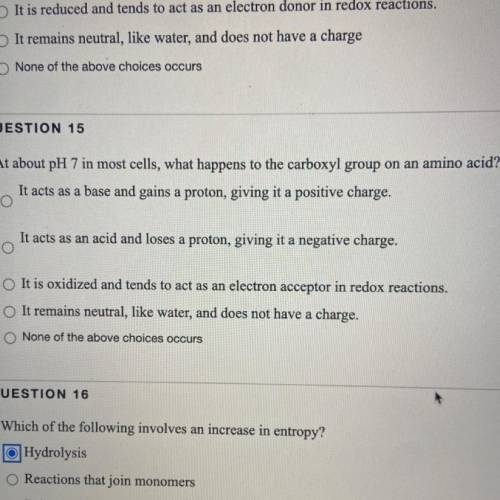
Biology, 15.02.2021 04:50, nickocasamplonp6mlob
At about pH 7 in most cells, what happens to the carboxyl group on an amino acid?
A. It acts as a base and gains a proton, giving it a positive charge.
B. It acts as an acid and loses a proton, giving it a negative charge.
C. It is oxidized and tends to act an electron acceptor in redox reactions.
D. It remains neutral, like water, and does not have a charge.
E. None of the above choices occurs


Answers: 3
Other questions on the subject: Biology




Biology, 22.06.2019 05:30, KArrington815
The carbon cycle is best defined as a process in which a. carbon changes from inorganic forms to organic forms and back b. carbon is changed into other elements such as oxygen or nitrogen c. carbon is continually created from the sun’s energy by plants d. carbon is consumed and regenerated from other elements such as oxygen and nitrogen
Answers: 1
Do you know the correct answer?
At about pH 7 in most cells, what happens to the carboxyl group on an amino acid?
A. It acts as a b...
Questions in other subjects:

Social Studies, 29.01.2021 21:00


Mathematics, 29.01.2021 21:00

English, 29.01.2021 21:00


Chemistry, 29.01.2021 21:00


Mathematics, 29.01.2021 21:00








